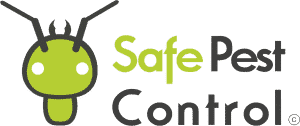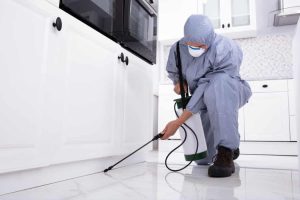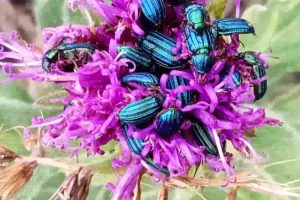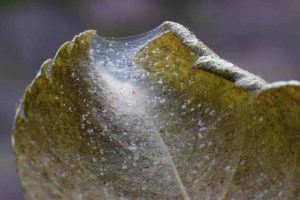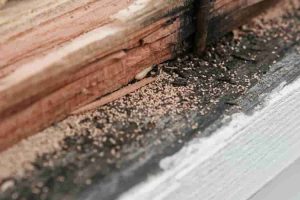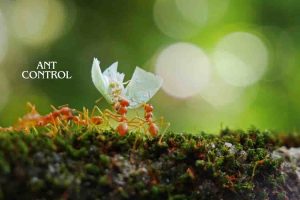Many of us worry that rain might wash away the pest control treatments we’ve applied to our homes, essentially nullifying efforts to keep pests at bay. This concern is quite legitimate, especially when considering the investment in time and resources we put into these treatments to protect our living spaces. However, advancements in pest control technology and application methods have minimized the impact of rain on the effectiveness of these treatments.
When we apply pest control treatments, we often fear that an unexpected downpour could render them useless. In reality, most modern insecticides are designed to withstand light to moderate rainfall. For treatments that are applied to the exterior of our homes, such as sprays targeting insects like spiders, the products typically dry quickly and adhere well to surfaces.
Understanding the relationship between rain and pest control treatments helps us make informed decisions about when and how to apply these treatments. Our extermination efforts can remain effective, even in the face of inclement weather, ensuring our homes stay protected. It’s always advisable to follow the specific guidelines of the products we use and to consult with pest control professionals if in doubt about weather conditions and their potential effects.
Understanding Pest Control Treatments
In our exploration of pest control, it’s essential to grasp the various treatments available and how they are applied. It’s equally important to understand the role of different chemicals and insecticides in protecting our homes and environments from unwanted pests.
Types of Treatments
Pest control treatments in Sydney come in various forms, each tailored to target specific pests and situations. Liquid pesticides are commonly used for a wide range of insects and are applied as a spray that creates a barrier against pests. On the other hand, granular pellets are designed for soil-dwelling insects and are spread on the ground where they dissolve over time to eliminate or repel pests.
Treatment Application
The efficacy of a pest control treatment hinges on proper application. Sprays must form an even coating on surfaces to create an effective barrier. This barrier must adhere to surfaces and dry properly to maintain its pest-deterring properties even in the face of environmental factors like rain. We diligently apply treatments at the most opportune times to ensure longevity and effectiveness.
Chemicals and Insecticides
When we discuss the chemicals and insecticides used in pest control treatments, it’s imperative to mention that these products are rigorously tested for safety and effectiveness. Insecticides such as Bi-Flex Aqua Low Odour are recognized for their low impact on humans and pets yet are potent against pests. We choose the type of treatment based on the specific pest issue, ensuring that the most suitable and effective chemical is used for your situation.
Effects of Rain on Pest Control
As we explore the impact of rain on pest control treatments, it’s critical to understand that weather conditions can influence the efficacy of pesticides. Let’s look at how rain can potentially affect the treatments and what measures we can implement to ensure continued protection against pests.
Rain and Pesticide Effectiveness
Rain can have a varying impact on the effectiveness of pesticides. Light rain, in some instances, may not significantly affect the treatment, especially if the product is designed to be water-resistant once dry. Products like Bi-Flex Aqua Low Odour are typically designed to dry quickly and bond to surfaces, making them less susceptible to washing away. However, heavy downpours occurring shortly after application could diminish the potency of pesticides, especially in unprotected areas where runoff is likely.
Protecting Treatments from Rain
Protecting our pest control service treatments from rain ensures their effectiveness, even in wet weather. It’s essential for treatments performed at ground level, such as granular insecticides, to be applied considering the forecast, to avoid them getting washed away. Sheltered areas typically retain the treatment better and continue to act as barriers against pests even when exposed to moisture.
Timing Treatments Around Weather
We often consider weather forecasts when planning our pest control treatments. The timing is crucial; ideally, we look for dry spells when rain is not expected. Some treatments may only require a light rain or a brief period without moisture to become effective. Strategic planning allows us to apply treatments that remain protected and ensure long-lasting pest defense.
Scheduling and Rescheduling Treatments
When planning for pest control services, we always consider the weather forecast to minimize disruptions and ensure maximum effectiveness. Rain can impact the timing and efficacy of treatments, so knowing when to reschedule and how to best communicate changes to our clients is paramount.
Planning for Rain
We stay ahead by monitoring weather forecasts closely. If light rain is anticipated, treatments can typically proceed. However, heavy rain may necessitate a change of plans, as the effectiveness of certain treatments could be compromised.
- Light Rain: Continue with treatment
- Heavy Rain: Consider rescheduling
When to Reschedule
Rescheduling is our go-to strategy when a significant downpour is expected before, during, or shortly after an appointment. We take proactive measures to:
- Assess: Determine the severity of the incoming weather.
- Decide: If a treatment’s effectiveness may be hindered, propose a new date.
- Act: Promptly reschedule to ensure optimal outcomes.
Communicating Changes with Clients
Open and clear communication is critical. Should we need to reschedule, we ensure our clients are informed promptly and with full transparency. We provide:
- Immediate Notification: We contact clients at the earliest indication of a need to reschedule.
- Flexible Options: We offer multiple rescheduling dates to accommodate our client’s convenience.
By taking these steps, we maintain our commitment to providing high-quality pest control services while respecting our clients’ time and trust in us.
Pest Behavior and Habitat During Rainy Weather
Certain pests alter their behavior and habitats significantly when rainy weather prevails. Understanding these changes is crucial for effective pest control efforts.
Common Pests and Moisture
Rainy weather increases ambient moisture levels, prompting various insects to become more active. Ants, for instance, are driven to move due to the potential flooding of their underground nests, often leading to them appearing in new locations. Termites, which thrive in moist environments, might exploit the softened wood around homes to gain entry and cause damage. On the other hand, spiders typically prefer dry environments but may venture into homes seeking shelter and prey that has also been displaced.
- Ants: Evacuate saturated nests, often leading to home invasions.
- Termites: Attracted to damp conditions, increasing infestation risks.
- Spiders: Seek dry shelter and may hunt displaced insects indoors.
Shelter Seeking Behavior
During periods of rain, many pests, such as cockroaches and mosquitoes, actively seek out dry shelter. This often leads them into our homes where they find warmth and potential food sources. For example, cockroaches are known to detest the cold and wet environment and will seek entry points such as cracks and crevices to gain access indoors. The increase in shelter-seeking behavior can result in a noticeable uptick in pest infestations during rainy periods.
- Cockroaches: Exploit gaps in buildings to escape the rain.
- Mosquitoes: May breed in stagnant water, then enter homes post-rainfall.
Protecting Your Home from Pests in All Weathers
We understand that maintaining a pest-free home requires diligence regardless of the weather. Our comprehensive approach ensures your home is safeguarded against pests come rain or shine.
Home Inspection and Protection
We emphasize the importance of a thorough home inspection to identify potential entry points for pests. Checking and sealing eaves and guttering can prevent water accumulation, which often attracts pests. We ensure that external walls are impenetrable by sealing cracks and crevices. It’s essential to protect weep holes as well, as these necessary ventilation points can also serve as gateways for pests. We recommend installing proper screens or grates. Pergolas and other outdoor structures should be treated with a repellent and checked regularly, forming an integral part of our home protection strategy.
Post-Treatment Care
After completing a pest control treatment, we advise our clients on the importance of post-treatment care. Contrary to common belief, treatments are designed to withstand the effects of rain, especially if they have dried properly after application. However, we advise extending the longevity of our treatment by avoiding direct interference with treated areas, such as heavy washing or landscaping activities that might disturb the protective barrier we’ve established around your home. Regular maintenance, such as cleaning gutters and repairing damaged structures, also plays a vital role in keeping your home pest-free.
Tips and Tricks for Homeowners
In approaching pest control, we focus on both preventive and maintenance strategies to safeguard our homes effectively. Here’s how we tackle potential pest issues with confidence and precision.
Preventive Measures
Fences and Verandas: To prevent pests, we ensure our fences are in good repair as they can act as a barrier against rodents and other wildlife. Keeping the veranda clear of standing water and debris also reduces the likelihood of creating a pest-friendly environment.
- Soil and Garden Beds: We keep soil and mulch well-tended around the foundation, maintaining a dry border around our home to deter pests seeking moisture.
Maintenance Advice
Internal Areas: Regularly inspecting and cleaning our internal areas is critical. We focus on areas that are often neglected, such as corners and behind appliances, using appropriate bonding agents when applying treatments to ensure the longevity of the pest control measures.
- Hoses and Water Sources: We routinely check for leaks around hoses and other water sources to fix any issues. Pests are attracted to moisture, so keeping our home dry is a key part of our pest control maintenance.
Professional Pest Control Support
When it comes to maintaining a pest-free environment, professional pest control services are an indispensable asset. We have a deep understanding of various pest behaviors and the most effective methods for their management, even in challenging weather conditions like rain.
During our initial inspection, we meticulously assess your property to identify potential vulnerabilities and signs of infestations. This enables us to devise a tailored pest control treatment plan that best suits your unique situation. It’s important to note that rain doesn’t always impede the effectiveness of pest treatments. Some of the products we use, for example, are designed to bind to treated surfaces and resist being washed away by rainfall.
To keep you well-informed, we provide a:
- Quarterly newsletter highlighting:
- Seasonal pest activity trends.
- Tips for keeping your home protected against pests.
- Updates on the latest pest control methods and how weather can influence these approaches.
Our pest control service packages often include follow-up visits to ensure that treatments remain effective over time. These services may include:
- Exterior inspections and maintenance.
- Interior treatment as needed.
- Reinforcement of barriers against pests.
Rest assured, with our professional support, you can expect a resilient and strategic approach to pest control, designed to deliver results rain or shine.
Local Considerations for Pest Control
When planning pest control measures, it’s crucial to consider the local environment and pest patterns. These factors heavily influence the approach and timing of treatments to ensure effectiveness.
Regional Pests and Climate
In Australia, our diverse climates from region to region mean pests can vary greatly in type and behavior. For example, summer in Australia often brings increased pest activity, and the warm, wet conditions can attract different species.
Southern Regions: In cooler, southern areas, we might use granules more effectively during damp conditions, as they can provide a controlled release of pesticides that aren’t as affected by sudden downpours.
Northern Regions: Conversely, in our tropical north, liquid treatments might be preferred in urban settings to combat the swift increase of insects during the humid summer months.
Particularly in summer, ensuring that the treatment remains effective despite rain is crucial. Companies like Flick adapt to these changes, utilizing fast-drying products that withstand weather conditions to ensure that treatment is not compromised.
Our goal is to adapt our approach based on your local region and specific seasonal conditions to deliver optimal pest control results year-round.
Conclusion
We understand your concerns regarding how weather conditions, specifically rain, may impact the efficacy of pest control treatments. Rain can influence treatments, but our expert application methods and strategies are designed to minimize any negative effects. Here’s what we consider:
Product Selection: We choose products like Bi-Flex Aqua Low Odour which have a quick drying time and are less susceptible to being washed away. For instance, when treating outdoor spaces for spiders, a thin film of insecticide that dries within minutes ensures that even if it rains shortly after application, the treatment remains effective.
Treatment Location: For treatments that are applied at ground level or in areas where rain can follow, we use granular products. These are less likely to be displaced by rainfall, thereby maintaining their potency.
Timing: We monitor weather conditions closely. If heavy downpour is expected, we may reschedule your treatment to ensure maximum effectiveness.
Post-Application Instructions: Post-treatment, we provide detailed guidance. If specific measures need to be taken in your washroom or other areas to maintain hygiene and treatment integrity, we’ll make it clear.
We’re confident in our approach and want to assure you that our pest control strategies are robust, even in the face of adverse weather. Your satisfaction and safety are paramount. Rest assured that we are fully equipped to handle any challenges that rain might pose.
On-Time Service

5 STAR SERVICE BASED ON 100+ GOOGLE REVIEWS
PET & FAMILY FRIENDLY TREATMENT

ALL YEAR-ROUND PROTECTION
Take Back Control Now
8
REASON TO CHOOSE SAFE PEST CONTROL
- Guarantee protection all year-round
- 30 Years Collective Experience
- An impeccable reputation across Sydney's Suburbs
- Certified treatments & written Warranty On all work carried out
- Family Owned & Operated
- Rated #1 Pest Control In Sydney NSW
- No Mess, No Smell
- Family & Pet Friendly Treatments
REQUEST A QUOTE
